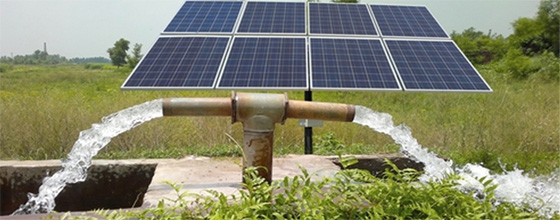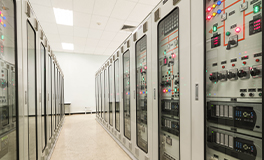The foundation of producing electricity from solar radiation was laid by a groundbreaking research by Alexandre Becqueral on the photoelectric effect. Since then, solar cells have been used to convert solar irradiation to electricity and have constantly evolved in a pursuit to achieve better efficiency and costs.
Photovoltaics has advanced at astonishing pace and promises to play a dominant role in the ongoing energy transition. Consequently, it is particularly fitting to discuss the roadmap of PV technologies and the future directions and challenges.
Developments and Advancements in Solar Photovoltaic Technology
During the period between 2010 to 2020, the silicon PV industry witnessed significant changes with rapid decreases in manufacturing cost and continued increases in efficiency. PERC technology has been the mainstay of industrial mass production of solar cells since around 2013. Though the PERC technology has been able to achieve low-cost-large-volume fabrication; the efficiencies have plateaued at around 22%.
To keep up with the market’s demand for higher efficiency, bifacial cells were reintroduced around 2018. The acceptance of bifacial modules has been good, with widespread applications, especially in ground-mounted systems. However the additional power output provided by bifacial modules is dependent on the reflectivity of the ground creating the albedo.
In a bid to increase efficiencies in the existing PERC technology, researchers have tried to reduce series resistance losses in crystalline cells and have designed modules with half-cut cells, thus improving the power output by almost 1.5%. Multi-Busbar cells have also been increased to aid better electron capture, thereby increasing output. MBB’s offer around a 2-2.5% increase in efficiency over conventional crystalline solar cells.
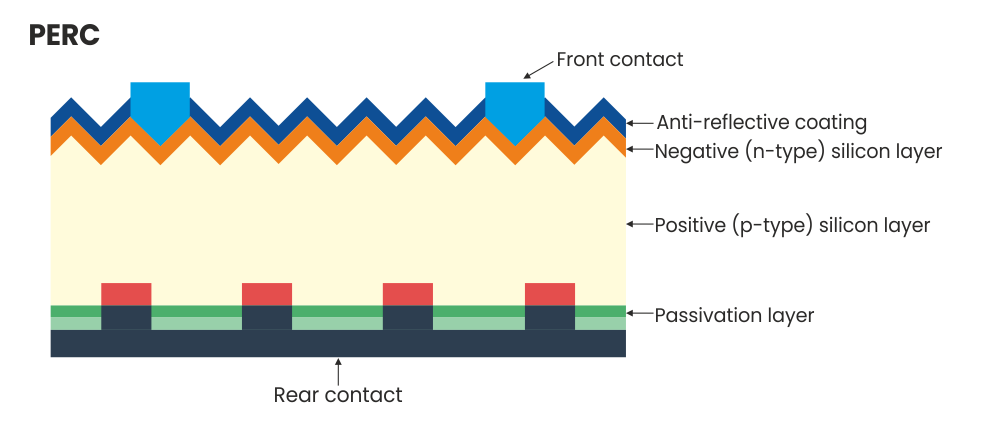
Alongside the developments in PERC technology, other high-efficiency cell technologies like HJT and HBC have been transferred to mass fabrications to develop highly efficient solar modules. Despite the high-efficiency of these cell technologies, a switch from the more prevalent PERC technology is complex and costly, limiting their adoption by the industry. The market, however, is in continuos pursuit of higher module efficiency; and these technologies may play a very important role in the future. In terms of cost, PERC cells still have the advantage in 2022.
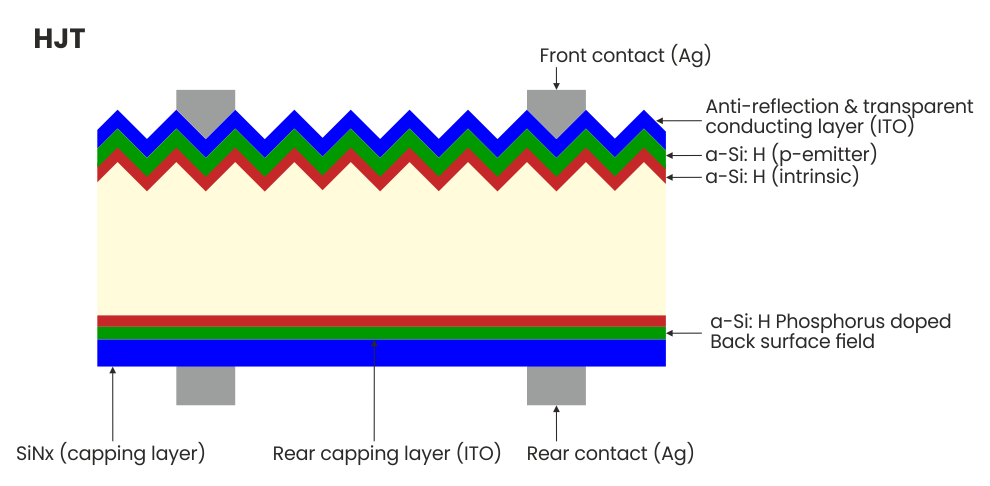
Another technology that has the industry upbeat is TOPCon. Though a fairly recent cell technology, its compatibility with existing solar cell fabrication processes, has the industry exited.With efficiency figures greater that 23% and possible ease of integration with existing production lines, it looks like an able successor to the PERC technology and an alternative to costly IBC and SHJ cells.
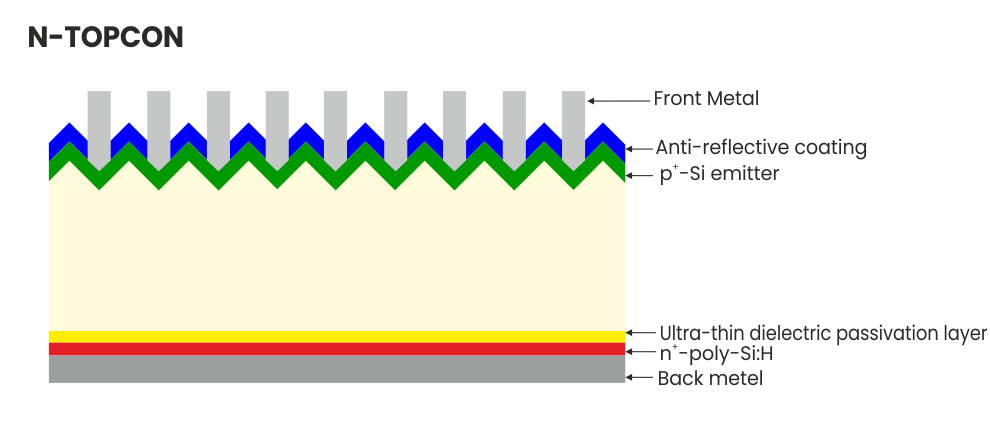 Currently, the main challenge for the industry is to adopt a well-accepted process sequence that would enable a cost-reduction roadmap to boost the global adoption of solar energy.
Currently, the main challenge for the industry is to adopt a well-accepted process sequence that would enable a cost-reduction roadmap to boost the global adoption of solar energy.
Newer and more efficient technologies like Pervoskite and SHJ tandem cells with efficiencies exceeding the intrinsic limits of crystalline silicon, are also under active R&D.
PERC Vs. TOPCON Vs. HJT: A Comparative Analysis
| PERC | TOPCON | HJT | |
|---|---|---|---|
| Production Efficiency | 23.1% | 23.5-24.5% | 23.5-24.5% |
| Ideal Efficiency | >24% | 23.5-24.5% | 23.5-24.5% |
| Bifacial Rate | >60% | >80% | >95% |
| LID | 1st Yr- 2.5% | 1st Yr-1.5% | <3% in future 10 Yrs |
| Yield Rate | 97-98% | 95% | 98% |
| Compatibility | Mature | Partially Compatible with PERC | Non-compatible with PERC |
| Cost of Investment in Facility | USD 22,000,000/GW | USD 35,000,000/GW | USD 57,000,000/GW |
| Core Facilities | ALD, PECVD, SE | LPCVD, P-diffusion furnace | PECVD, PVD/RPD |
| Process Steps | 7 | 12 | 4 |
| Wafer Thickness | 160-180um | 150-160um | 90-140um |
| Wafer Sizes | 166/182/210 | 166/182 | 166/210 |
| Wafer Type | P | N | N |
| Defects | No scope of higher efficiency & cost reduction | Silver cost is high CTM Low More process steps | Siver cost is high CTM is Low New facility cost is high |
Although silicon is a well understood semiconductor, it asks for wider research to refine the characterization of properties and defects. With a largely standardized industry, crystalline silicon-based PV is well-positioned to meet the requirements of the fast- expanding market with its intrinsic challenges. Improved technology and careful defect analysis are the keys to an increase in reliability. To push efficiency beyond the intrinsic limits of silicon, tandem technologies can be useful. However significant research is required to enable this at low costs for industrial adoption and mass production.
About LUBI Electronics
LUBI Electronics is a leading company in India, exhibiting expertise in the automation, solar, and control panel industry.
Our solar offerings include best-in-class solar modules, solar pumps, solar pump controllers and solar inverters.
For more information on our offerings, please reach out to us at lubi@lubielectronics.com.




